About The Procedure
Posterior Lumbar Fusion
The main goals for Posterior Lumbar Fusion (sometimes called minimally invasive TLIF) surgery are to remove pressure on painful nerves, stabilize any unwanted motion between the bone, and remove unwanted deformity.
The operation is done through two smaller incisions several inches to the side of the center of the spine on the back. Minimally invasive instruments and retractors are used to dilate through the muscles to access the spine. Dr. Paul can then access arthritic joints, spinal stenosis, disc herniations, cysts, and other pathologies using this versatile approach.
After alleviating compression on the nerves, he begins removing the disc remaining between the vertebral bodies. When complete, he fills the space with donated bone and cage devices that help support the boney fusion and improve the bones’ position. Pedicle screws and short rods are applied to help hold the construct together while the fusion heals.
Dr. Paul takes great care to meet short-term pain relief and neurologic improvement goals along with long-term goals of spinal balance and realignment, so additional surgeries are less likely later in life. He uses specialized intraoperative imaging and software to minimize adjacent level disease.
The unique nature of the retractors allow powerful realignment of any deformities through a less invasive approach. This can lead to better outcomes and a lower rate of degeneration at other levels. Your implants are MRI compatible and are not known to set off metal detectors.
Posterior Lumbar FusionBy the numbers
levels reconstructed per year
cases per year
surgeons proctored
retractor system and three implants designed
Posterior Lumbar FusionBy the numbers
levels reconstructed per year
cases per year
surgeons proctored
retractor system and three implants designed
Common Surgical Risks
We have attempted to define the more common risks of surgery under each of the procedures outlined. It is impossible to outline all potential poor outcomes, but we have attempted to do so in good faith. It has not been formed as legal protection for us – only to better inform you. Please read them thoroughly.
Infections are a known complication of lumbar surgery. Infection rates are more associated with smoking, poorly controlled diabetes, obesity as well as other health factors. Less invasive and shorter procedures also have lower complication rates. Infections requiring additional surgery are extremely rare in Dr. Paul’s practice.
Bleeding can be a serious complication since blood accumulation can compress the spinal cord or nerve roots. For that reason we require discontinuing blood thinners, some anti-inflammatories and all herbal medications.
Spinal Leaks are a known complication in spine surgery but typically can be managed. They occur approximately 3 to 5% of the time They can be the result of adherent bone, disc, ligament or scar tissue to the dura and the membrane surrounding your nerves or spinal cord. They are far more associated with revision surgery, severe nerve compression and advanced age. If this occurs, we typically repair the leak during your operation. You may be required to lay flat for a short period of time afterwards. Late presenting or persisting spinal leaks can require additional surgery. Spinal leaks typically do not affect long term outcomes.
How Do People Function After TLIF Surgery?
With proper post-operative activity, therapy and positive mindset, people lose minimal function with a short lumbar fusion. The goal is for improved overall function with surgery. The degree to which people notice a loss of motion is very subjective and individual. From a mechanical perspective, you lose some motion with any fusion. The question becomes how your remaining levels and joints compensate to retain your function and everyday lifestyle. Dr. Paul’s team rarely relies on braces and extensive immobilization. The instrumentation and current spinal techniques generally create enough stability to allow the bones to fuse. As a result, we allow people to move sooner after surgery. This also helps to maintain strength and flexibility in the remaining portions of your core and spine. If necessary, we typically order physical therapy after your two-week visit with Adam or Kevin. Exceptions would include fusions involving four or more levels and people with osteopenia.


Stopping Medications Before Surgery
Because of the risk of bleeding we require you come off the following medications for at least ten days prior to surgery. You may need to get clearance from the prescribing physician to allow a pause in these medications.


Why Do I Need a Coach?
Suggestions for choosing your coach..
The First Few Days After Surgery
Incisional Care:
Be sure to keep the wound dry by changing the dressings at least once a day, more if needed. Your incision may drain for the first week or so after surgery. This is common and expected and should lessen as you get further out from surgery.
Regular dressing changes will prevent problems. A wet dressing will breakdown the healing skin and may lead to delayed healing and possibly infection. You may shower 72 hours after surgery, but you must keep the wound dry. If you cannot keep the wound dry, please take a sponge bath until your first postoperative visit to discuss. Concerning signs include foul smelling drainage and a “tomato red” wound.
How to handle post-operative pain:
Naturally, once anesthetics have worn off, pain will become increasingly evident in the areas involved in a surgical procedure. You may not have much incisional pain after surgery because there is local anesthesia injected at the time of surgery. This will wear off in the evening. We recommend you use the pain medicine prescribed or muscle relaxant to avoid the potential for getting behind your pain.
When to call our office after surgery
Reasons to call after hours:
- Increasing drainage from a surgical wound or fevers greater than 101 degrees
- Significant throat swelling (after neck surgery)
- Loss of control of bowel or bladder
- Potential need to postpone scheduled surgery for the next business day
Reasons to call during business hours:
- To make an appointment
- Discuss or obtain test results
- Medication refills
- Inquiries regarding insurance, billing, or disability paperwork
We strongly recommend implementing the use of MyDulyHealth to contact the office. Laura and our staff monitor the messages during business hours.
Common Post-Operative Concerns: Q&A
You may still experience some of your pre-operative pain or symptoms.
This is because the nerves can take a long time to heal and may still be sensitive immediately after surgery. As healing progresses and the initial inflammatory phase as surgery resolves, the nerve irritations will resolve. This may take weeks to months in certain circumstances. This is why we follow our patients up to a year after surgery.
The use of pain medicines can, and most likely will, cause constipation.
If you are prone to constipation, make sure your bowels are soft and moving regularly prior to surgery for several days. Some patients will start a clear liquid diet the day before. It is especially important that you have a bowel movement within 48 hours after surgery. Opioid medications in particular are associated with constipation, and patients should look into taking a stool softener such as docusate, and a fiber laxative such as psyllium to facilitate normal bowel movements.
Nausea and Vomiting.
If you are prone to nausea and vomiting, please let the anesthesiologist know the day of surgery. Current anesthetic practices have drastically improved these issues, but additional precautions may help. Also, Dr. Paul’s team will avoid medications that may cause nausea and vomiting for you.
Infection.
Although uncommon, wounds can become infected following any operation. Redness and warmth accompanying unusually painful incisions are suggestive of infection, as well as oozing of the incision site. Risk of deep infection within the first 2 weeks after surgery is rare. If you develop a sustained fever over 101 or if you experience malodorous drainage or the incision turns deep red and sensitive to touch please contact our office. Notify your physician immediately if any of these symptoms occur please call or message us using the MyDMG app.
2-6 Weeks After Surgery
We often talk to patients about the first two weeks being the most difficult after a lumbar fusion. The first 2 days are the hardest in that 2-weeks. The more generally active you are the more the muscle soreness improves. Please do not just lay in bed.
In the early weeks, gradually increase activities. Remain on your feet for more extended periods and improve your walking distances. You may return to a sedentary job in as little as 2-3 weeks but with no bending, twisting, or lifting more than 10 pounds. Sit only in chairs with good lumbar support.
You may start a regular aerobic activity such as vigorous walking, Stairmaster, or low impact aerobic exercise classes if allowed after the first follow up appointment. This is typically in 2-3 weeks. Once you are off of any narcotic pain killers, you are free to drive from our standpoint.
6-12 Weeks After Surgery
After the first six weeks, we typically decrease restrictions. If you were given a brace, it is typically no longer required and we allow for more bending or twisting as required for normal everyday activities.
We will often raise the lifting restriction to 20 to 30 pounds. You may return to light duty or physical labor if pain-free and allowed by your surgeon—with minimal bending or twisting. We do not recommend returning to work if you commute more than one hour each way. You may swim after six weeks. Continue your physical therapy exercise program. You may be shown specific therapeutic exercises at your six-week visit.
Bracing
The use of a lumbar brace is often used with an instrumented fusion (use of spacer implant, screws and rods). This bracing is typically for 6-weeks only, which usually aligns with the second post-op visit. The brace is to be worn anytime you are standing, sitting or walking greater than a few minutes. If you need to get up to briefly use the washroom, you may do so without the brace on. You do not need to use the brace while bathing or sleeping.
Bracing
The use of a lumbar brace is often used with an instrumented fusion (use of spacer implant, screws and rods). This bracing is typically for 6-weeks only, which usually aligns with the second post-op visit. The brace is to be worn anytime you are standing, sitting or walking greater than a few minutes. If you need to get up to briefly use the washroom, you may do so without the brace on. You do not need to use the brace while bathing or sleeping.
Bone Stimulators
If Dr. Paul believes you are at higher risk for not healing your fusion, he may order a bone stimulator. These are painless devices that you wear for approximately half an hour each day. You can wear them over your brace.
Most of our braces are supplied by Colin Bagley and his associates. Click here to Learn More About Bone Stimulators.
Watch the videos to learn more about the science behind, how to control, and apply bone stimulators.
Bone Stimulators
If Dr. Paul believes you are at higher risk for not healing your fusion, he may order a bone stimulator. These are painless devices that you wear for approximately half an hour each day. You can wear them over your brace.
Most of our braces are supplied by Colin Bagley and his associates. Click here to Learn More About Bone Stimulators.
Watch the videos to learn more about the science behind, how to control, and apply bone stimulators.
Physical Therapy
Some of our patients may benefit from physical therapy after surgery. Kevin and Adam will likely order this for you in 2 or 6 weeks if necessary. We prefer to send you to physical therapists with specific emphasis on spine and in your immediate area.
Our “partner” physical therapists understand Dr. Paul’s protocols and surgeries. If you live outside our area, or out of state, we will work with your local therapists on a case by case basis.
Access Dr. Paul’s Curated Rehab & Physical Therapy Video Library.






Physical Therapy
Some of our patients may benefit from physical therapy after surgery. Kevin and Adam will likely order this for you in 2 or 6 weeks if necessary. We prefer to send you to physical therapists with specific emphasis on spine and in your immediate area.
Our “partner” physical therapists understand Dr. Paul’s protocols and surgeries. If you live outside our area, or out of state, we will work with your local therapists on a case by case basis.
Athletic Rehabilitation
For our more athletic patients we have a number of videos and protocols to regain your full function. You MUST be cleared by Dr. Paul, Kevin or Adam before pursuing any of these workout routines. Not everyone is suited for these. We often require your therapist to transition you to workouts like these before having you work independently. Most of these videos provide a foundational basis for athletic activity.
Athletic Rehabilitation
For our more athletic patients we have a number of videos and protocols to regain your full function. You MUST be cleared by Dr. Paul, Kevin or Adam before pursuing any of these workout routines. Not everyone is suited for these. We often require your therapist to transition you to workouts like these before having you work independently. Most of these videos provide a foundational basis for athletic activity.
- Exercise
- Running
- Yoga
- Golf
- Cycling
- Pilates
For a more novel look at planks
Nice introduction to athletic core stabilization workouts
This video is an outstanding explanation of why core exercises are so important (Place next to plank workouts).
These are some advanced but valid concepts. Caution is still required to get into more serious weightlifting.
For Athletes: This workout develops the posterior chain. It's more aggressive than it looks
Runners: may find this helpful as a way to lessen back pain before or after surgery if you are a runner watch this
Foot strike is important for avoiding back and neck pain but this video also gets into the entire kinetic chain and posture.
Runners: may find this helpful as a way to lessen back pain before or after surgery if you are a runner watch this
This video for runner’s emphasizes pelvic position.
More on Improving Foot Strike.
For more serious runners.
Yoga For Back Pain | Strengthen & Stretch Your Way To A New Healthy Back
Yoga For Neck, Shoulders, Upper Back - 10 Minute Yoga Quickie
Back Pain & Sciatica Relief | Daily Yoga Miracle Therapy
Yoga for Neck and Shoulder Relief
Although designed for “Senior Golfers”, there are some tips for anyone who needs to make changes to their swing so as to adapt to their spine’s needs.
There are some interesting concepts introduced here. Some are worth trying but are unorthodox.
This is a very holistic view on cycling and bike positions. It’s For Road Cyclists but also has some ideas for more casual bikers.
This is a top notch video on stretching for cyclists. Dr. Paul performs these routinely.
Some Exercises to prevent Back pain on the bike.
Practical advice for avid cyclists and triathletes.
Basic Introduction to Pilates for people with back pain.
Another nice introduction for people looking to get more active again without much strain.
Surgical Treatments
A Contemporary Approach to Spine Surgery
Dr. Paul is on the cutting-edge of minimally invasive spinal surgery. He is recognized for his work and serves as the founding surgeon of Duly Health and Care ’s Spine Center.
















